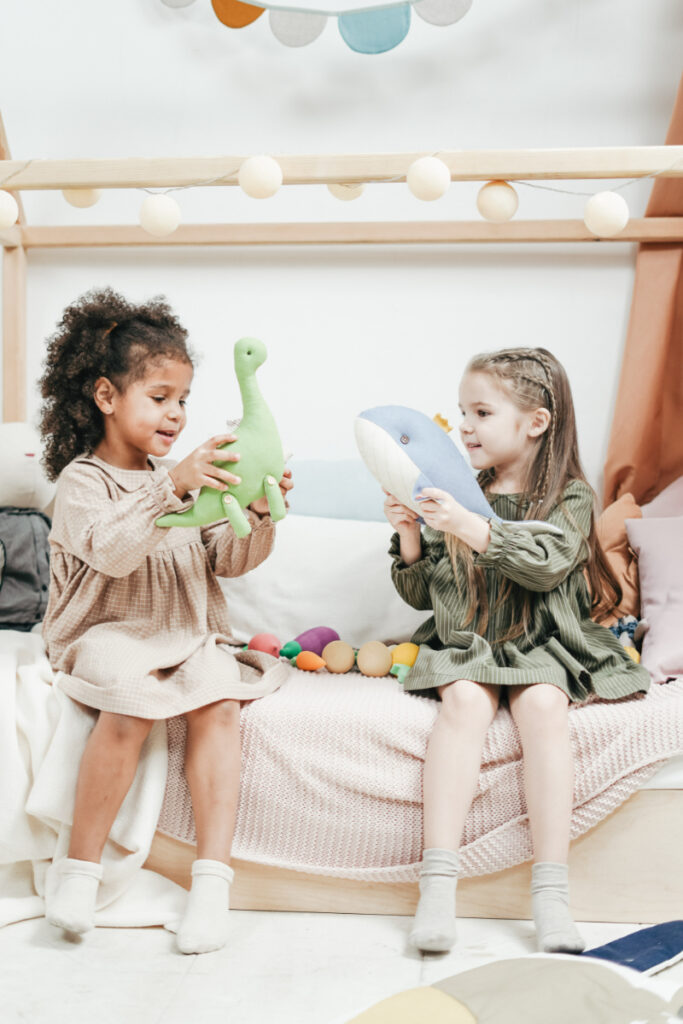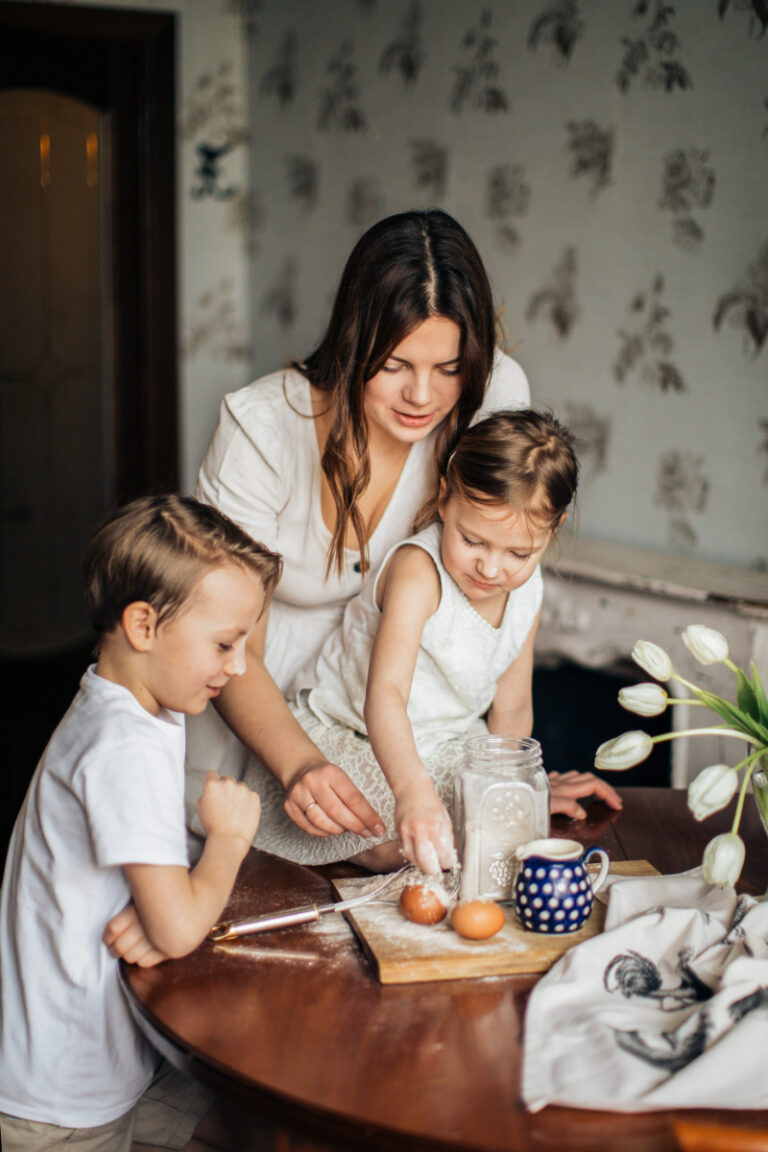10 Mindfulness Activities for Kids to Promote Mental Health and Well-being
Mindfulness is a powerful tool for promoting mental and emotional well-being, not just for adults but also for children. In today’s world, where stress, anxiety, and distractions are common, mindfulness can help kids develop greater awareness, focus, and self-regulation skills. By practicing mindfulness, kids can learn to manage their emotions, increase their resilience, and improve their overall health and well-being. This article will explore ten engaging and fun mindfulness activities that parents, caregivers, and educators can use to help kids develop these crucial skills. These activities are suitable for children of all ages and can be easily incorporated into daily life. By teaching kids mindfulness techniques at an early age, we can give them the tools they need to thrive and lead happier, more fulfilling lives.

Benefits of mindfulness for kids
Mindfulness offers a wide range of benefits for children’s mental, emotional, and physical well-being. By practicing mindfulness, kids can develop essential life skills and enjoy a better quality of life. Some key benefits of mindfulness for kids include:
- Improved focus and concentration: Mindfulness practices help children develop their attention span and stay focused on tasks, leading to better academic performance and enhanced problem-solving skills.
- Emotional regulation: Mindfulness teaches kids to recognize their emotions, understand their triggers, and respond with greater self-control and awareness. This skill is crucial for managing stress, anxiety, and anger effectively.
- Increased self-awareness: Through mindfulness, children become more aware of their thoughts, feelings, and bodily sensations, fostering a deeper understanding of themselves and their needs.
- Enhanced resilience: Regular mindfulness practice helps kids build resilience, enabling them to bounce back from challenges and cope better with adversity.
- Better social skills: Mindfulness encourages empathy, compassion, and active listening, which are essential for developing strong, healthy relationships with peers and adults.
- Reduced stress and anxiety: By learning to stay present and focused, children can reduce stress and anxiety levels, leading to a calmer and more relaxed state of mind.
- Improved sleep quality: Mindfulness practices, such as relaxation techniques and meditation, can help kids wind down before bedtime, promoting better sleep quality and overall health.
- Boosted self-esteem: As kids develop greater self-awareness and self-regulation skills through mindfulness, they often experience increased self-confidence and self-esteem.
- Enhanced creativity and imagination: Mindfulness activities that involve visualization, sensory exploration, or artistic expression can stimulate children’s creativity and imagination.
- Physical health benefits: Many mindfulness activities, like mindful movement or yoga, help improve children’s physical health by enhancing flexibility, strength, and balance.
By introducing mindfulness practices to kids, parents, caregivers, and educators can help them reap these benefits and support their overall well-being and development.
Mindful breathing exercises
Mindful breathing exercises are an excellent way to introduce mindfulness to kids, as they are simple, easy to follow, and can be practiced anywhere. These exercises help children develop focus, calm their minds, and connect with their bodies. Here are four mindful breathing exercises that kids can enjoy:
- Belly Breathing: Have the child sit or lie down comfortably. Ask them to place one hand on their belly and the other on their chest. Instruct them to take slow, deep breaths, making sure the hand on their belly rises and falls while the hand on their chest stays relatively still. Encourage them to focus on the sensation of their breath filling their lungs and belly.
- Balloon Breath: Ask the child to imagine they are holding a deflated balloon. As they inhale deeply, they should visualize the balloon inflating. When they exhale, they should picture the balloon deflating. This exercise helps kids concentrate on their breath while using their imagination.
- Counting Breaths: Instruct the child to take a deep breath in and then exhale slowly. Have them count each breath silently in their mind, starting from one and going up to ten. After reaching ten, they can start over at one. This practice encourages kids to stay focused on their breath and helps improve concentration.
- Flower and Candle Breath: Have the child imagine they are holding a beautiful, fragrant flower in one hand and a lit candle in the other. Ask them to breathe in the pleasant scent of the flower and then gently blow out the candle without extinguishing the flame. This exercise combines visualization with mindful breathing, promoting relaxation and focus.
Encourage children to practice these mindful breathing exercises daily or whenever they feel stressed, anxious, or overwhelmed. With regular practice, kids will develop a greater sense of self-awareness and emotional regulation.
Guided meditation
Guided meditation is a powerful mindfulness tool for kids, as it combines deep relaxation with engaging storytelling and visualization. These meditations can help children develop focus, reduce stress, and enhance their imagination. Here are some steps to create a simple guided meditation for kids:
- Choose a quiet, comfortable space: Find a calm and quiet area where the child can sit or lie down without distractions. Encourage them to get into a comfortable position, close their eyes, and take a few deep breaths.
- Begin with a relaxation exercise: Start by guiding the child through a body scan or progressive muscle relaxation. Ask them to focus on each part of their body, releasing tension and relaxing their muscles, starting from their toes and working up to their head.
- Create a calming story or scenario: Develop a simple, age-appropriate story that incorporates soothing imagery, such as a walk through a peaceful forest, floating on a gentle cloud, or exploring a magical underwater world. Use descriptive language to engage the child’s senses and make the experience more immersive.
- Encourage visualization: As you narrate the story, ask the child to visualize the scenes in their mind. Encourage them to use their imagination and explore the details of the environment, such as the colors, sounds, and textures.
- Add affirmations or positive messages: Throughout the meditation, incorporate positive affirmations or messages that promote self-esteem, confidence, and inner peace. For example, remind the child that they are strong, capable, and loved.
- Gently bring the child back to the present: After the meditation, guide the child to slowly bring their awareness back to their body and surroundings. Ask them to wiggle their fingers and toes, take a few deep breaths, and gently open their eyes.
- Reflect on the experience: Encourage the child to share their thoughts and feelings about the meditation. Discuss any insights or emotions that arose during the practice, and remind them that they can return to this peaceful state whenever they need to.
Regular guided meditation practice can help kids develop mindfulness skills, reduce stress, and enhance their emotional well-being. You can find many guided meditation scripts and recordings online or create your own customized meditations tailored to the child’s interests and needs.
Mindful movement activities
Mindful movement activities help kids develop body awareness, focus, and self-regulation while also promoting physical fitness. These activities combine mindfulness with physical movements, encouraging children to stay present and connected to their bodies. Here are four mindful movement activities suitable for kids:
- Yoga: Yoga is a popular and effective way to introduce mindful movement to children. Teach kids simple yoga poses, such as tree pose, cat-cow, or downward-facing dog, and encourage them to focus on their breath and body sensations while practicing. There are many kid-friendly yoga resources available online, including videos, books, and illustrated guides.
- Tai Chi or Qigong: These ancient Chinese practices involve slow, gentle movements combined with deep breathing and mental focus. Introduce kids to basic Tai Chi or Qigong exercises that emphasize balance, coordination, and relaxation. Look for age-appropriate classes or instructional materials to help guide your practice.
- Mindful walking: Take a walk with the child, encouraging them to pay attention to the sensations in their feet, legs, and body as they move. Ask them to notice the feeling of their feet touching the ground, the rhythm of their steps, and the movement of their muscles. This activity can be done indoors or outdoors and can be adapted to various environments, such as walking on grass, sand, or a textured mat.
- Dance and creative movement: Encourage kids to express themselves through dance and creative movement, focusing on the connection between their emotions, thoughts, and bodily sensations. Set up a safe space for them to move freely and explore different types of music and movement styles. Guide them to focus on their breath and body sensations while dancing, helping them stay present and mindful.
Incorporate these mindful movement activities into your child’s routine to promote physical, mental, and emotional well-being. By combining mindfulness with physical exercise, kids can develop greater self-awareness, focus, and resilience.
Mindful coloring and drawing exercises
Mindful coloring and drawing exercises are fun, creative ways for kids to practice mindfulness. These activities help children develop focus, relaxation, and creativity while also providing a calming outlet for stress and anxiety. Here are four mindful coloring and drawing exercises for kids:
- Mandala coloring: Mandala coloring involves coloring intricate, circular patterns that are traditionally used in spiritual practices. Provide a mandala coloring book or print out free mandala designs online and encourage the child to color in each section mindfully, focusing on their breath and bodily sensations. This activity can be relaxing and meditative, promoting calm and inner peace.
- Zentangle art: Zentangle is a form of art that uses structured patterns and repetitive lines to create intricate designs. Provide the child with a Zentangle template or ask them to create their own design. Encourage them to focus on each stroke and line, using a pen or pencil to create their unique pattern mindfully.
- Mindful drawing: Ask the child to pick an object or a scene, like a flower, a tree, or a landscape, and draw it mindfully. Instruct them to focus on the details, textures, and colors of the subject while drawing, noticing any sensations or emotions that arise during the process.
- Gratitude drawing: Give the child a blank piece of paper and ask them to draw something they are grateful for. It could be a person, a pet, a place, or a thing. Encourage them to use bright colors and expressive lines to capture the emotion of gratitude. After completing the drawing, have them reflect on the experience and share what they are grateful for.
These mindful coloring and drawing exercises are simple, accessible, and enjoyable for kids of all ages. They provide a creative outlet for kids to express themselves while developing mindfulness skills. Incorporate these exercises into your child’s daily routine to promote relaxation, focus, and well-being.
Gratitude practices
Gratitude practices are a powerful way for kids to cultivate positive emotions and develop mindfulness. These practices help children focus on the present moment and appreciate the good things in their lives, fostering a sense of happiness, contentment, and resilience. Here are four gratitude practices suitable for kids:
- Gratitude journaling: Give the child a notebook or a piece of paper and ask them to write down three things they are grateful for each day. Encourage them to be specific and detailed, focusing on small, everyday things that bring them joy. This practice helps kids develop a habit of noticing the positive and cultivating gratitude.
- Gratitude jar: Set up a gratitude jar in the house, where family members can write down things they are grateful for on small pieces of paper and drop them into the jar. At the end of the week or month, gather together and read aloud the notes in the jar, expressing gratitude and appreciation for each one.
- Gratitude scavenger hunt: Create a list of items or activities that the child can find or do that represent things they are grateful for, such as a favorite toy, a special memory, or a beautiful view. Have them search for these items mindfully, reflecting on why they are grateful for each one.
- Gratitude sharing: Encourage the child to share what they are grateful for with others, such as family members, friends, or teachers. This practice promotes empathy, connection, and positive communication skills, while also reinforcing the value of gratitude.
Incorporate these gratitude practices into your child’s daily routine to help them develop a more positive, grateful mindset. By focusing on the good things in life and expressing appreciation, kids can cultivate a sense of well-being and happiness.
Sensory mindfulness activities
Sensory mindfulness activities engage children’s senses, helping them develop awareness, focus, and relaxation. These activities encourage kids to pay attention to their immediate surroundings, enhancing their sensory perception and deepening their connection to the present moment. Here are four sensory mindfulness activities suitable for kids:
- Nature walk: Take the child on a mindful nature walk, encouraging them to notice the sights, sounds, smells, and textures of the natural environment. Ask them to touch the leaves, smell the flowers, listen to the birds, and feel the ground beneath their feet, staying present and aware of each sensation.
- Mindful eating: Engage the child’s senses while eating by asking them to pay close attention to the taste, texture, and smell of each food item. Encourage them to eat slowly and mindfully, focusing on each bite and chewing thoroughly. This activity helps kids develop healthier eating habits and enhances their sensory awareness.
- Sensory bin: Create a sensory bin or box filled with small objects that engage the child’s senses, such as sand, rice, beads, or water. Ask the child to explore the items mindfully, using their hands to feel the textures, looking closely at the colors and shapes, and listening to the sounds they make. This activity encourages sensory exploration and imagination while promoting relaxation.
- Mindful listening: Instruct the child to close their eyes and listen carefully to the sounds around them, identifying each one and focusing on it for a few seconds. Encourage them to notice any subtle sounds they may have missed before, such as distant traffic, rustling leaves, or chirping insects. This activity enhances auditory perception and helps kids develop greater focus and concentration.
Incorporate these sensory mindfulness activities into your child’s routine to promote sensory awareness, relaxation, and focus. By engaging their senses and staying present in the moment, kids can deepen their connection to the world around them and enhance their overall well-being
Mindful listening exercises
Mindful listening exercises help children develop focus, concentration, and empathy by training them to be fully present and attentive to the sounds around them. These exercises encourage active listening, which is essential for effective communication and building strong relationships. Here are four mindful listening exercises for kids:
- Sound scavenger hunt: Instruct the child to close their eyes and listen carefully to their surroundings, identifying as many different sounds as they can. After a few minutes, have them open their eyes and share the sounds they noticed. This activity helps sharpen auditory perception and teaches kids to tune in to their environment.
- Singing bowl or chime meditation: Use a singing bowl, chime, or bell to create a calming sound. Ask the child to listen to the sound carefully and follow it as it fades away. Encourage them to raise their hand when they can no longer hear the sound. This exercise promotes focus, relaxation, and auditory awareness.
- Mindful storytelling: Read a story or play an audiobook for the child, asking them to listen closely to the words, characters, and emotions. Pause at certain points and ask the child to reflect on what they heard, encouraging active listening and comprehension skills.
- Listening partners: Pair up the child with a sibling, friend, or family member. Have one person share a story or experience while the other listens mindfully, without interrupting or commenting. Afterward, have the listener repeat back what they heard, focusing on key points and emotions. Switch roles and repeat the exercise. This practice fosters empathy, active listening, and effective communication skills.
Incorporate these mindful listening exercises into your child’s daily routine to help them develop greater focus, empathy, and communication skills. By practicing active listening and staying present in the moment, kids can enhance their overall well-being and build stronger connections with others.
Tips for incorporating mindfulness into daily life
Incorporating mindfulness into daily life can help kids develop essential skills such as focus, emotional regulation, and resilience. Here are some tips for parents, caregivers, and educators to make mindfulness a regular part of children’s routines:
- Start with short, simple practices: Begin by introducing short and easy mindfulness exercises that are age-appropriate and engaging for kids. Gradually increase the duration and complexity of the activities as they become more comfortable and skilled in mindfulness.
- Be consistent: Establish a routine by setting aside a specific time each day for mindfulness practice, such as after school, before bedtime, or during quiet moments in the day. Consistency helps reinforce the habit and makes it easier for kids to integrate mindfulness into their lives.
- Lead by example: Practice mindfulness yourself and share your experiences with your child. By modeling mindfulness and its benefits, you encourage them to embrace the practice and create a supportive environment for growth.
- Make it fun and engaging: Use creative and enjoyable activities that capture kids’ interest and imagination, such as mindful games, storytelling, or art. Tailor the activities to your child’s interests and needs to keep them motivated and engaged.
- Be patient and flexible: Understand that learning mindfulness takes time and practice. Be patient with your child’s progress and adapt the activities or schedule as needed to accommodate their unique learning style and preferences.
- Encourage open communication: Discuss mindfulness with your child, asking them about their experiences, thoughts, and feelings related to the practice. Provide a safe space for them to express themselves and share their insights.
- Connect with nature: Incorporate outdoor mindfulness activities, such as mindful walks or nature exploration, to help kids connect with the natural world and enhance their sensory awareness.
- Integrate mindfulness into daily activities: Encourage your child to practice mindfulness during everyday tasks like brushing their teeth, eating, or getting dressed. This helps them develop the habit of being present and aware throughout the day.
- Use technology mindfully: There are many apps, videos, and online resources available to help teach mindfulness to kids. Use these tools wisely and mindfully to support your child’s learning and practice.
- Collaborate with educators: Work with your child’s teachers or school to incorporate mindfulness into the classroom setting. This helps create a consistent and supportive environment for kids to develop their mindfulness skills.
By following these tips and incorporating mindfulness into daily life, you can help your child develop valuable life skills that will enhance their overall well-being and happiness.
Conclusion
Mindfulness is a powerful tool for promoting mental and emotional well-being in children. By practicing mindfulness, kids can learn to manage their emotions, increase their resilience, and improve their overall health and well-being.
There are many engaging and fun mindfulness activities that parents, caregivers, and educators can use to help kids develop these crucial skills. These activities include mindful breathing exercises, guided meditation, mindful movement activities, mindful coloring and drawing exercises, gratitude practices, sensory mindfulness activities, and mindful listening exercises.
By incorporating mindfulness into daily life and following the tips in this article, we can give our children the tools they need to thrive and lead happier, more fulfilling lives.






